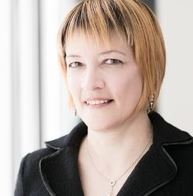
Perpetual sparks global transformation, accelerates with Microsoft Catalyst
Perpetual is a diversified financial services business with three core business units, more than 1,000 employees and operations around the world.
Data plays a critical role in the success of Perpetual and digital technology allows that data to flow around the body corporate. Historically the organisation has operated multiple different platforms, each selected either by the business unit it serves, or to meet particular geographic requirements.
Integration between those systems often requires manual activity, and process automation has, to date, been limited.
Perpetual is now undertaking a root and branch transformation, creating a holistic, modern and secure digital platform using Microsoft technologies, that will serve the needs of the entire organisation, all around the world, expediting access to information and streamlining operations.
The firm’s CEO, Rob Adams, has been vocal about his plans for growth – both organic and through potential merger and acquisition activity. That reinforces the need for modern, scalable and trusted digital foundations that grow in lockstep with the business to deliver value for stakeholders.
As the first financial services participant in Microsoft’s Catalyst program, which is designed to support organisations as they plan and execute transformations leveraging Dynamics 365, the Power Platform and Microsoft cloud, Perpetual is setting a cracking pace with its modernisation, supported by Microsoft partner, Insight – paving the way for even greater success.
Microsoft met with Amanda Gazal, Chief Operating Officer and Jillian Carmody, General Manager Technology to learn more about the transformation underway.
Microsoft (MS): This is a major transformation, tell us how you have managed the program of work?
Jillian Carmody (JC): I believe that the process we used has worked well, and Microsoft themselves have said that they’ve found this one of the best Catalyst programs that they’ve worked on. We were able to incorporate proof of concepts through the Catalyst process, which was not something that Microsoft had done before.
Things like proofs of concept are really valuable in helping people, particularly our executives and other senior leaders, to understand what these things can look and feel like and the sort of value that you will get from them.
The teamwork between everybody involved was just phenomenal.
Microsoft Teams was originally going to roll out for the Catalyst project team to use it as a proof of concept, and in the end, we rolled it out for the whole of Perpetual. We’ve also just recently started using the Teams environment to see how we might be able reduce our reliance on share drives for our document and records management.
MS: You have undertaken a number of international mergers – how does this modernisation support that?
JC: To be able to grow the right way and perform financial reporting, our existing solutions had to be replaced. We’re looking at the general ledger, finance and ops components of Dynamics 365. We’re also looking at the CRM – how we start to do some replacement of our legacy CRM and create an enterprise CRM.
MS: And you have started to use Power Platform to automate?

JC: Our business is diversified and it’s quite heavily face-to-face and high customer touch; we were looking for something that allowed us to do small scale process automation much more efficiently and effectively without the cost and the overhead of larger automation platforms.
We have an in-house team called RAPID who have become really expert at using Power Apps – they’re working with our lines of business to start automating small processes so that you can start to see that change happening almost in real time.
You’re not having to wait 3 or 6 or 12 months for larger solutions to be put in place. And because we can do it ourselves and affordably, it means we’re able to implement more short-term solutions, and get the benefit of that while we’re waiting for more strategic solutions to be put in place.
Amanda Gazal (AG): The other thing that Jillian’s RAPID team does quite well is being strategic with where we’re starting. For example, we have very manual processes in certain parts of the business, so we ask can we reduce a seven-step process to an automated process?
MS: Are there security benefits from moving to a more integrated platform?
JC: With multiple different systems you’ve got to complete security assessments covering the same aspects every single time you implement a new solution. So there’s cost attached to that, both dollars and time, to get all the different security solutions just to work together. Having that single platform strategy starts to simplify your environment. It becomes a bit of a no brainer for an organisation like Perpetual.
MS: And does the platform approach help you manage and grow tech skills?
JC: We were a heavily outsourced organisation, from a technology perspective and some other business functions.
Now as we standardise we can set up centres of expertise, start insourcing and build those capabilities. So we’re starting to establish Microsoft centres of expertise – in cloud, in Power Apps.

We will build more centres of expertise so we can self-serve much more and become less reliant on third parties. There’s a fairly significant cost difference when you’re always having to go out to a third party, and particularly a specialist third party for most of what we’re doing. But also the IP, you can’t underestimate the value and the cost of lost IP.
AG: I’m a big believer in if someone can do it better, cheaper and provide thought leadership, then you should outsource. What you keep in house should be where your strategic alpha is, where your value internally or to your client is. These centres of excellence are very much around that.
I am a big believer in true strategic partnerships, not transactional vendor relationships – and Microsoft and Insight are two good examples of that.
MS: There must be quite a change management challenge?
JC: We are mindful that this involves change, so it’s been imperative from the start that we have the right senior sponsorship to pave the way forward and bring our people and our clients on that journey.
AG: I think RAPID’s a great example of business-as-usual change management. I’ll sit in a meeting with our head of compliance and she starts talking about the logistics of the ASIC and ASX reporting requirements. I simply say, “Go chat to RAPID. There may be something they can do for you there.” I think the education comes first, the tangible evidence comes second, and then the formal change management and embedment.
MS: So where are you at with the roadmap?
JC: This financial year we’ll have GL go live, particularly for the Australian business, but then our focus will turn to onboarding our overseas businesses.
AG: The GL is a good example of the target state – a true enterprise rollout where it will be the GL for Perpetual Group, not just the GL for Perpetual Australia.
For example, think about the due diligence around a potential M&A we were to consider. With a better general ledger, we would have better modelling capabilities, better utilisation of Power Apps. I think the impact would be felt in the due diligence of our M&A pipeline, and quicker and improved decision-making.
MS: How might the client experience change?
AG: I think this is where the greatest value comes – in our ability to improve the client experience. While much of the immediate benefit will be the internal process improvement, this will result in an uplift to the end output to the client (speed, quality etc).
Fiduciary Intelligence is a good example of an immediate CX impact. Power Apps process automation will kick in to streamline client engagement and we have been able to replace spreadsheets and questionnaires with a digital workflow. Working with Microsoft Catalyst, it took two weeks to stand up a proof of concept, and then we were live in four months. An amazing result which speaks volumes to being able to move rapidly now and in the future toward CX uplift.










